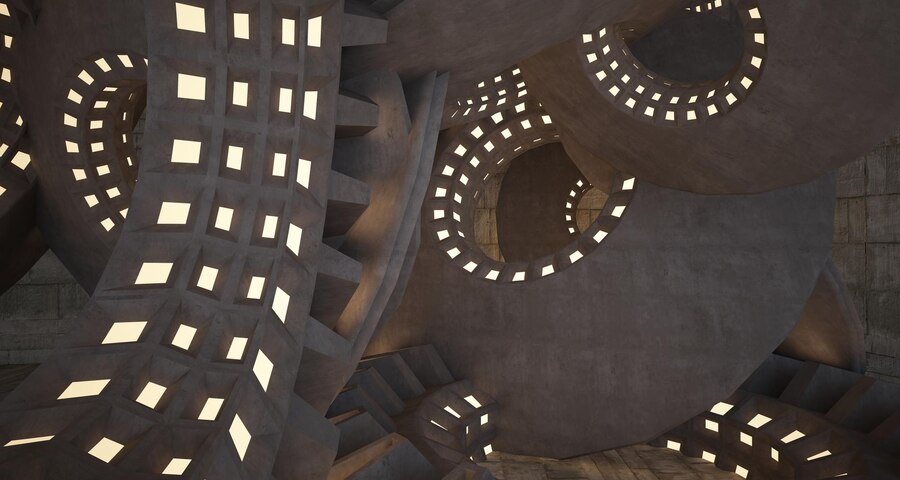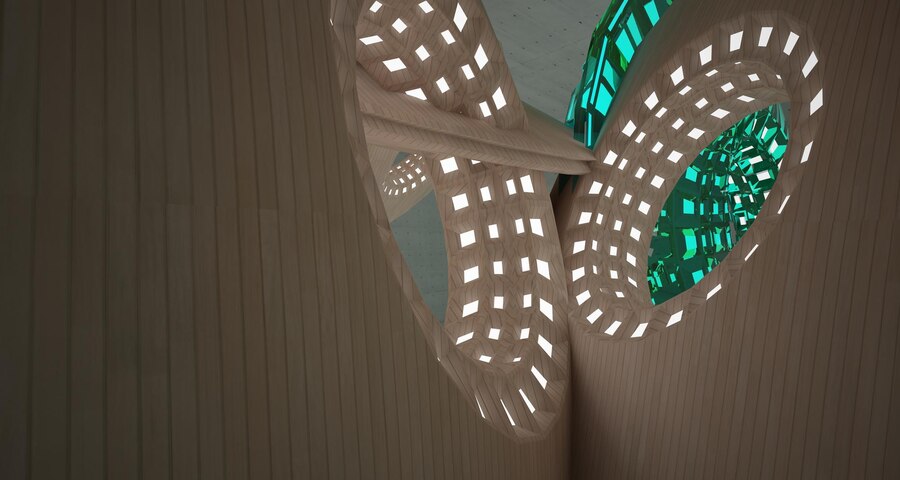
Dubai’s transformation from a humble port town to a global icon of modern architecture is a journey that speaks of ambition, innovation, and unparalleled creativity. The city’s skyline is recognized worldwide, showcasing impressive feats of engineering and design philosophies that push the boundaries of architectural excellence. Combining Arabic design with modern techniques, Dubai’s art and architecture embody the perfect blend of cultural heritage and futuristic vision.
1. The Roots of Dubai’s Modern Architecture
Dubai’s architectural journey began with the discovery of oil in the 1960s, a pivotal point that fueled rapid economic growth and laid the foundation for the city’s urban development. Initially influenced by traditional Arabic design, Dubai’s early structures were low-rise buildings with intricate details reflecting the Bedouin heritage. However, as Dubai gained global attention, the city embraced architectural innovation, leading to the rise of record-breaking skyscrapers and luxurious developments.
2. Iconic Landmarks Defining the Skyline
The Dubai skyline is synonymous with several architectural marvels, each symbolizing the city’s relentless pursuit of greatness. Among these, the Burj Khalifa stands as a beacon of Dubai’s ambition. Soaring at an impressive 828 meters, the Burj Khalifa is not only the tallest building in the world but also a testament to Dubai’s dedication to architectural excellence. Designed with Islamic architectural influences, this engineering marvel integrates smart technology and environmental design, providing a sustainable urban living experience.
Another defining landmark, Palm Jumeirah, showcases Dubai’s audacious spirit. This artificial archipelago, shaped like a palm tree, combines nature with luxury. Hosting world-class hotels and residences, Palm Jumeirah represents Dubai’s pioneering approach to urban planning and tourism development, turning reclaimed land into a symbol of opulence.
3. A Nod to Cultural Influences in Architecture
Dubai’s architecture seamlessly merges traditional and modern influences, creating a distinctive urban landscape. Arabic design elements, such as the traditional wind towers, known locally as barjeels, are incorporated into modern buildings, reflecting the city’s respect for its cultural heritage. Wind towers, initially designed to cool interiors naturally, have become iconic symbols of Dubai’s historical architecture and continue to inspire sustainable design techniques.
The Sheikh Zayed Grand Mosque in Abu Dhabi also highlights Islamic architectural influences. Adorned with intricate geometric patterns and traditional Arabic calligraphy, this mosque is a tribute to cultural heritage while embracing modern construction techniques.
4. Dubai’s Commitment to Sustainable Architecture
As Dubai continues to develop, sustainability has become a core consideration in its architectural evolution. The Dubai Sustainable City is a prime example of the city’s dedication to environmental sustainability. This eco-friendly community is powered by renewable energy, featuring vertical gardens, smart technology, and sustainable building materials. Dubai’s focus on creating a greener, more sustainable urban landscape not only redefines the skyline but also positions the city as a leader in global sustainability initiatives.
Moreover, sustainable architecture trends are reflected in modern skyscrapers, where architectural glazing and energy-efficient materials are widely used. These structures incorporate responsive facades and green spaces to reduce energy consumption, aligning with Dubai’s commitment to environmental preservation.
5. The Fusion of Innovation and Luxury
Dubai is renowned for its luxurious developments that set new standards in design and lifestyle. The Burj Al Arab, often regarded as the world’s only seven-star hotel, exemplifies Dubai’s affinity for luxury and innovation. Standing on an artificial island, the sail-shaped structure symbolizes Dubai’s visionary development, with an architectural design that is both aesthetically pleasing and structurally sound. The Burj Al Arab serves as a symbolic statement for Dubai, similar to the Eiffel Tower in Paris or the Opera House in Sydney, drawing tourists from around the world.
6. Architectural Trends Shaping the Future
With globalization and economic diversification driving Dubai’s growth, several architectural trends are shaping the city’s future. Smart technology, vertical gardens, and urban living spaces are integral to new developments. Additionally, courtyard housing, a design concept rooted in Arabic traditions, is now adapted to provide privacy and ventilation, offering public interaction spaces while respecting the traditional family structure.
The emphasis on creating complete environments that enhance quality of life defines Dubai’s future skyline. These architectural trends not only address the needs of modern urban dwellers but also ensure that Dubai’s buildings remain resilient against the desert climate.
7. Challenges and Triumphs in Architectural Development
Dubai’s architectural journey has not been without challenges. From engineering complexities to environmental constraints, architects and builders in Dubai have navigated obstacles with ingenuity. The construction of the Dubai World Trade Centre in the 1970s marked the city’s first step toward a high-rise skyline, facing challenges like extreme heat and the need for effective cooling systems. This building, designed by British architect John R. Harris, incorporated innovative techniques to reduce energy consumption, setting a precedent for future developments.
Modern construction techniques, such as reinforced concrete and advanced glazing, have since become standard practices, allowing for sustainable and resilient structures. The city’s infrastructure has also adapted, with state-of-the-art facilities that support Dubai’s status as a global business hub and a leader in urban planning.
8. A Skyline Beyond Limits
Dubai’s skyline is a reflection of its resilience, ambition, and commitment to architectural excellence. The Dubai Frame, a colossal golden structure, symbolizes the city’s journey from humble beginnings to a global icon. This unique structure not only provides panoramic views of the past and future Dubai but also serves as a reminder of the city’s continuous pursuit of innovation and excellence.
The art and architecture of Dubai continue to attract international attention, with the city hosting conferences like the upcoming Environmental Design, Material Science, and Engineering Technologies event. Organized in collaboration with IEREK and Abu Dhabi University. This conference will highlight Dubai’s contributions to environmental sustainability and innovative architecture.
Conclusion: Dubai’s Ever-Evolving Architectural Legacy
Dubai’s architectural evolution is a story of progress, vision, and cultural reverence. From traditional wind towers to futuristic skyscrapers, Dubai has created a skyline that is a testament to human achievement. As the city continues to grow and innovate. It remains a global icon of architectural excellence, inspiring the world with its balance of cultural heritage and cutting-edge technology.
The future of Dubai’s architecture points toward a limitless skyline, where tradition meets innovation, and where sustainable urban living becomes the norm. With each new development, Dubai reaffirms its role as a pioneer in the art of architecture. Shaping not only the city’s future but also setting new benchmarks for architectural design worldwide.
